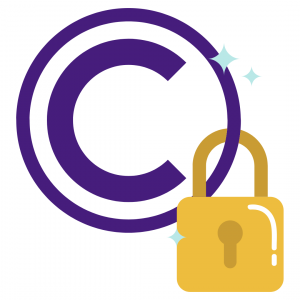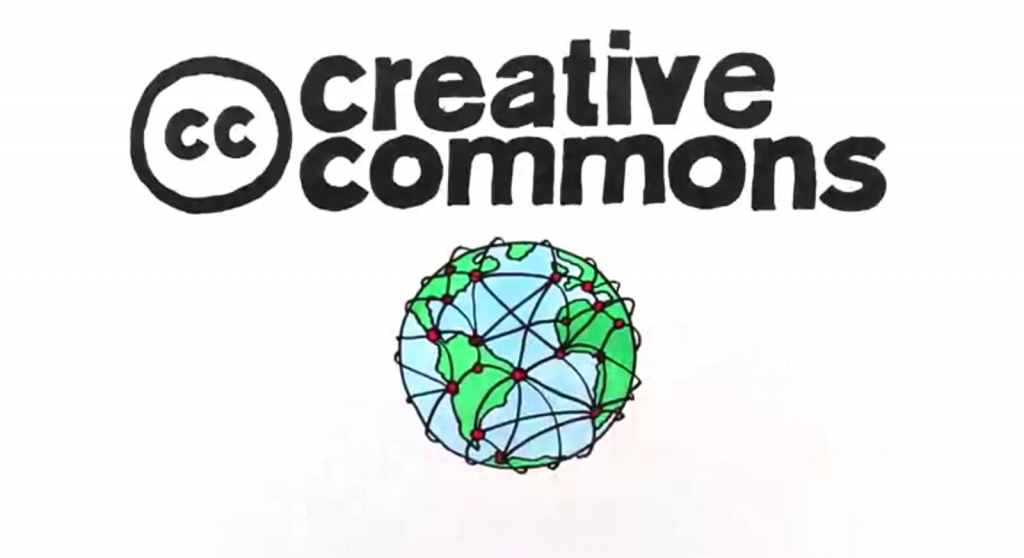9 Copyright
Kaci Wilson and Jessica Hawkes
As you begin your research, you will inevitably encounter copyrighted materials, but what does that mean for you? To understand how copyright will play into your own research and understanding of plagiarism, you need a better understanding of copyright itself and what it means for you.
Our digital world has made it easier to find, copy, and distribute materials. Copying images, artwork, articles, and other forms of intellectual property is as easy as the click of a mouse. Because our digital environments have made it much easier to share resources, it is important to better understand the legal protections and licenses that many creators place their work under.
What is copyright?

Copyright is a legal protection which protects creators’ intellectual property. Copyright grants the creators’ control over the use of their created works and gives the creators the right to determine who can use their work and how. Some of the rights that copyright extends to the creators of these works are:
- The right to copy or reproduce the work
- The right to build upon the work with derivative works
- The right to distribute the work
- The right to publicly perform the work
- The right to publicly display the work
What is protected by copyright?
Copyright protects the authorship of intellectual works such as:
- Literary works such as poetry, novels, and blog posts
- Musical works such as songs and musical compositions
- Dramatic works such as pantomimes, choreography, and scripts prepared for cinema, television, radio, or online streaming
- Computer software and web content including source code and images
- Architecture such as plans, drawings, and buildings
What is not protected by copyright?
While many works are protected by copyright laws, not everything is protected under these laws. Some examples of items not protected by copyright are:
- Works that do not have a tangible form of expression such as spoken word or choreography that have not been notated or recorded. This also includes impromptu performances that have not been written down or recorded.
- Titles, names, short phrases, and slogans; familiar symbols or designs; simple variations of typographic ornamentation, lettering, or coloring; simple listings of ingredients or contents
- Ideas, procedures, methods, systems, processes, concepts, principles, discoveries, or devices. However, a description, explanation, or illustration may be protected by copyright.
- Works consisting entirely of information that is common property and containing no original authorship (for example: standard calendars, height and weight charts, tape measures and rulers, and lists or tables taken from public documents or other common sources). These works are considered neither original nor creative.
How long are copyrighted materials protected?
Works created after January 1, 1978 are protected for the creator’s lifespan plus 70 years. Once the copyright has expired, those works are placed in the public domain. All work created prior to January 1, 1978 is already in the public domain.
What is the public domain?
The public domain refers to creative works that are not protected by copyright, trademark, or patent laws. These works may have never received a copyright or are works that are no longer protected by copyright. Works in the public domain are considered to be owned by the public rather than an individual. While anyone can use works in the public domain without seeking permission, no one will ever own these works.
What is Creative Commons?
Creative Commons is another type of copyright under which creators may provide others the right to reuse, readapt, or distribute their work. Creative Commons offers creators a series of easy-to-understand licenses that they can apply to their work. This means that many works under these licenses can be reused and adapted without seeking permission from the license holder.

Remember that Creative Commons are simply a copyright tool. A Creative Commons license does not guarantee that there are no other rights such as trademark, patent, or privacy rights that you should consider when reusing these materials.
All Creative Commons licenses require that you attribute the author and include the license the work is distributed under. To learn more about the different types of licenses, visit the Creative Commons website.
How can you use copyrighted materials?
Fair use allows individuals the use of a copyrighted work without permission from the creator under specific circumstances. This allows reproduction and other uses of copyrighted works for the specific purposes of criticism, commentary, news reporting, teaching, scholarship, and research.
When considering whether your use qualifies as fair use, consider the following:
- The purpose and character of the use, including whether such use is of a commercial nature or for nonprofit educational purposes
-
- The primary focus with this factor is whether the use is “transformative.” Courts typically focus on whether the use is “transformative.” Does it build on copyrighted work in a different manner or for a different purpose, or does it merely copy from the copyrighted work?
- The nature of the copyrighted work
-
- Using material from primarily factual works is more likely to be considered fair use than using purely fictional works.
- The amount and substantiality of the portion used in relation to the copyrighted work as a whole
-
- Borrowing small bits of material from an original work is more likely to be considered fair use than borrowing large portions. However, even a small taking may weigh against fair use in some situations if it constitutes the “heart” of the work.
- The effect of the use upon the potential market for, or value of, the copyrighted work
-
- Uses that harm the copyright owner’s ability to profit from his or her original work by serving as a replacement for demand for that work are less likely to qualify as fair use.
What happens if you use copyrighted materials without permission?
The use of copyrighted materials without permission is a serious transgression. Court action may be taken to cease the use of the copyrighted materials along with possible monetary damages paid to the copyright holder.
In the digital age, copyright infringement becomes even more complicated as even seemingly ordinary actions, such as downloading music or computer software, can be considered copyright infringement. Remember, if there is a copyright on the work, you must request permission from the creator in order to use the work.

